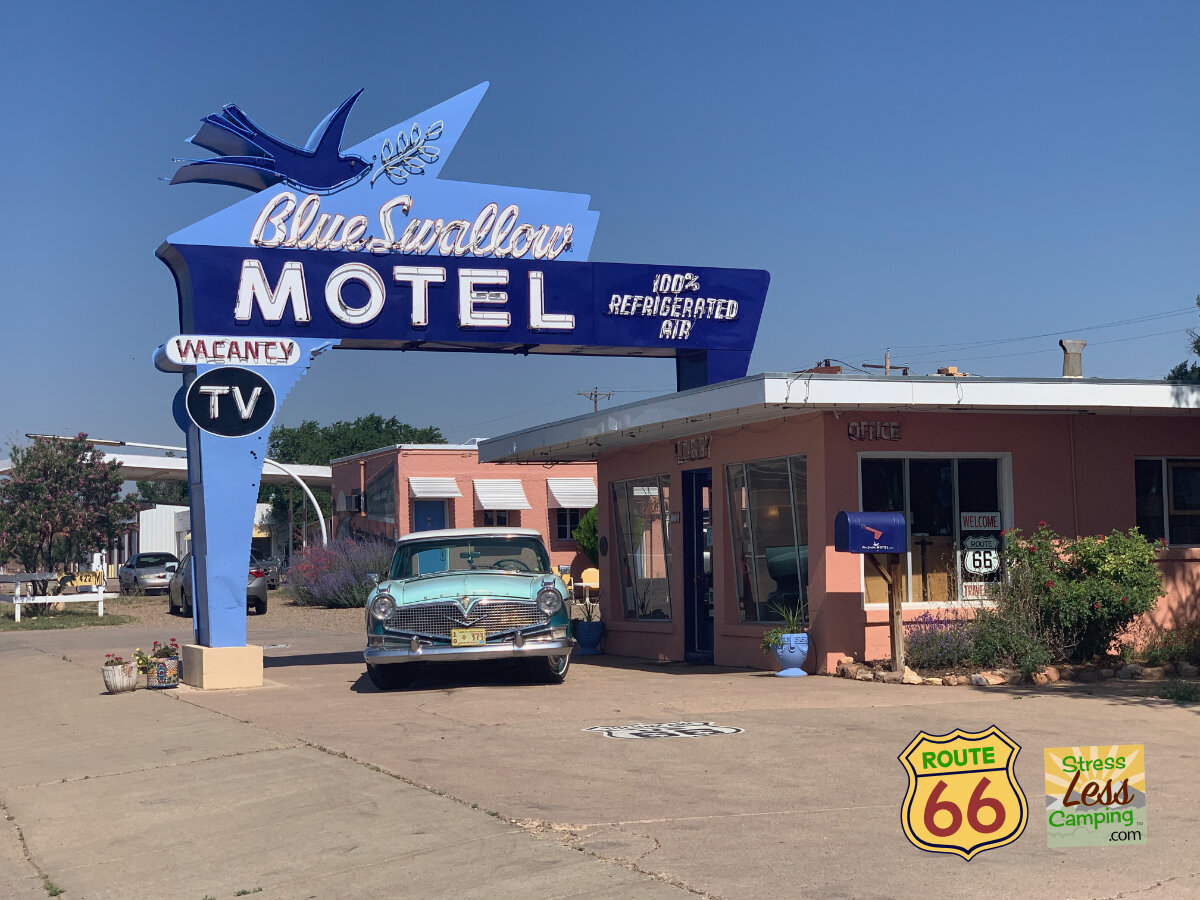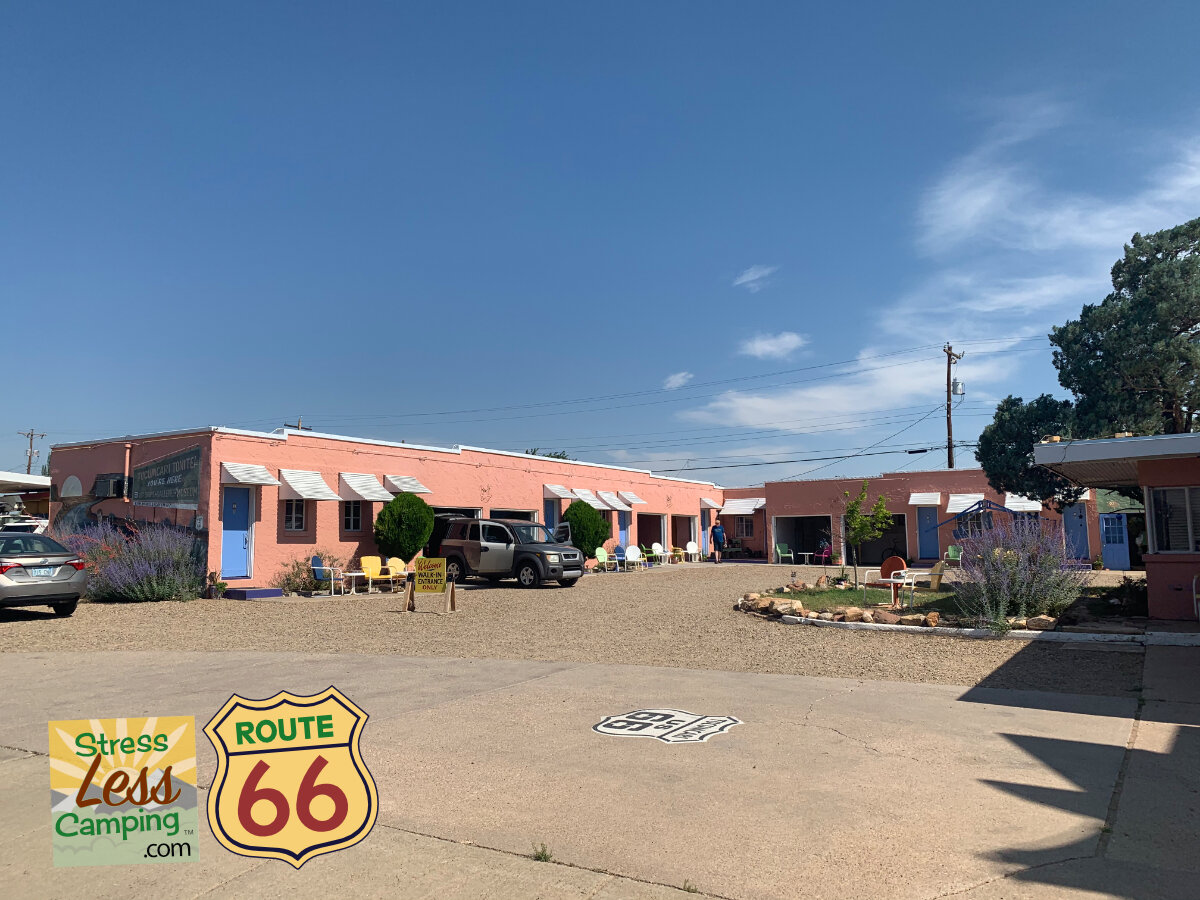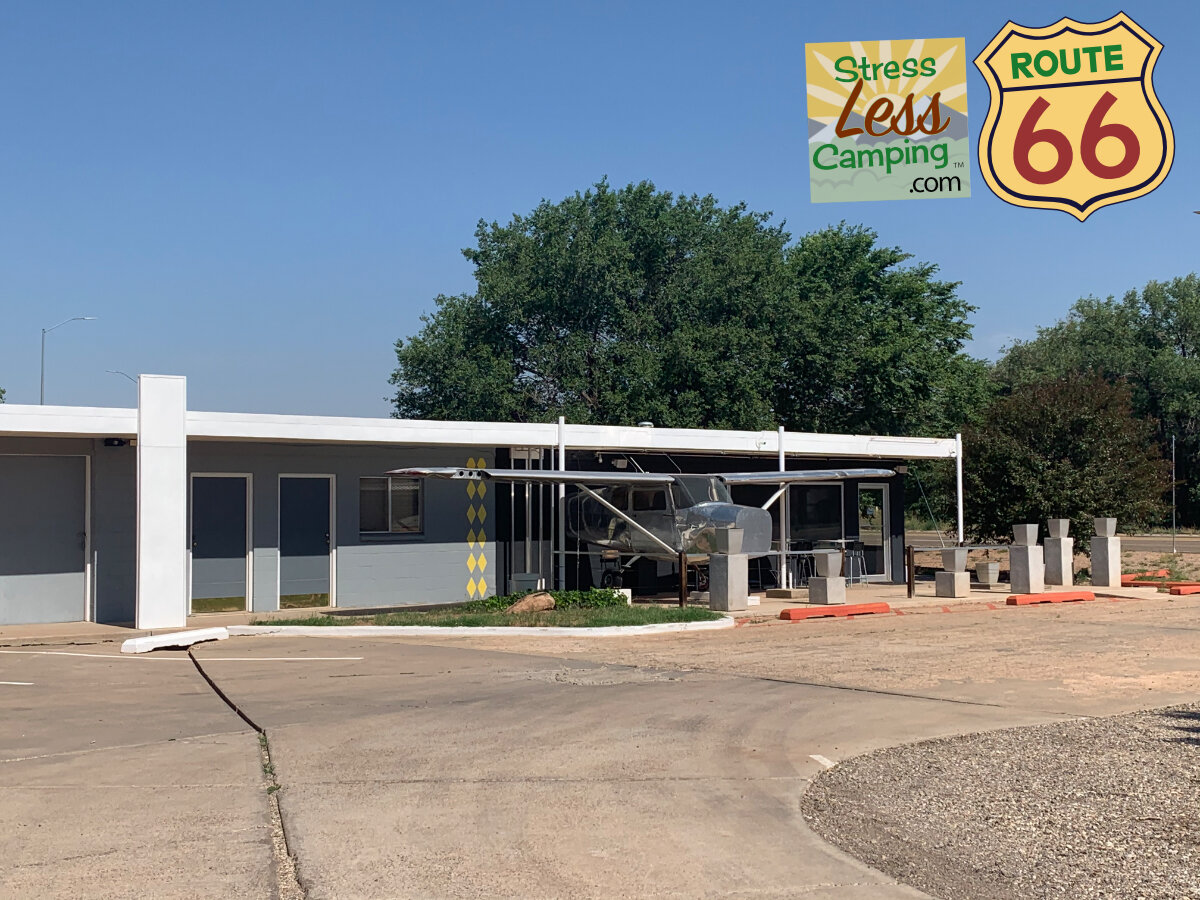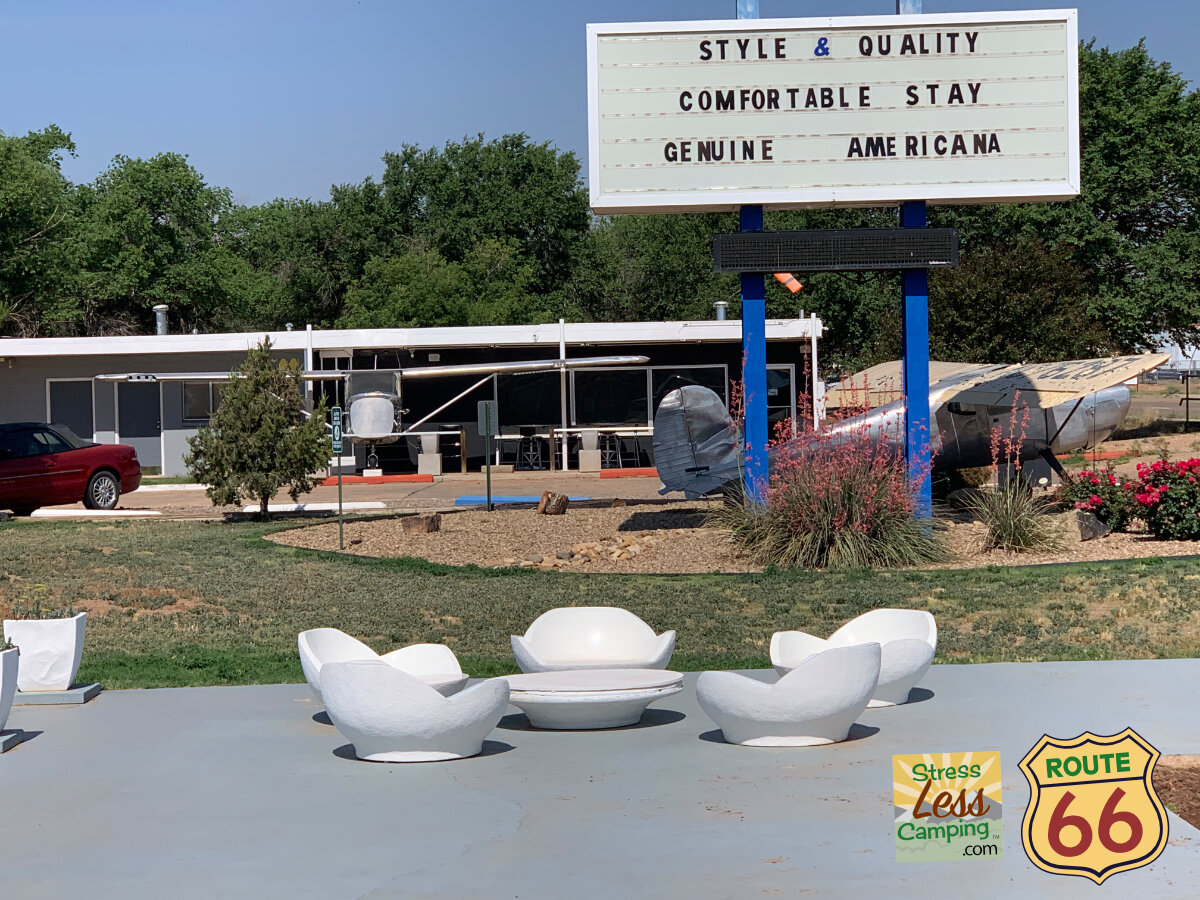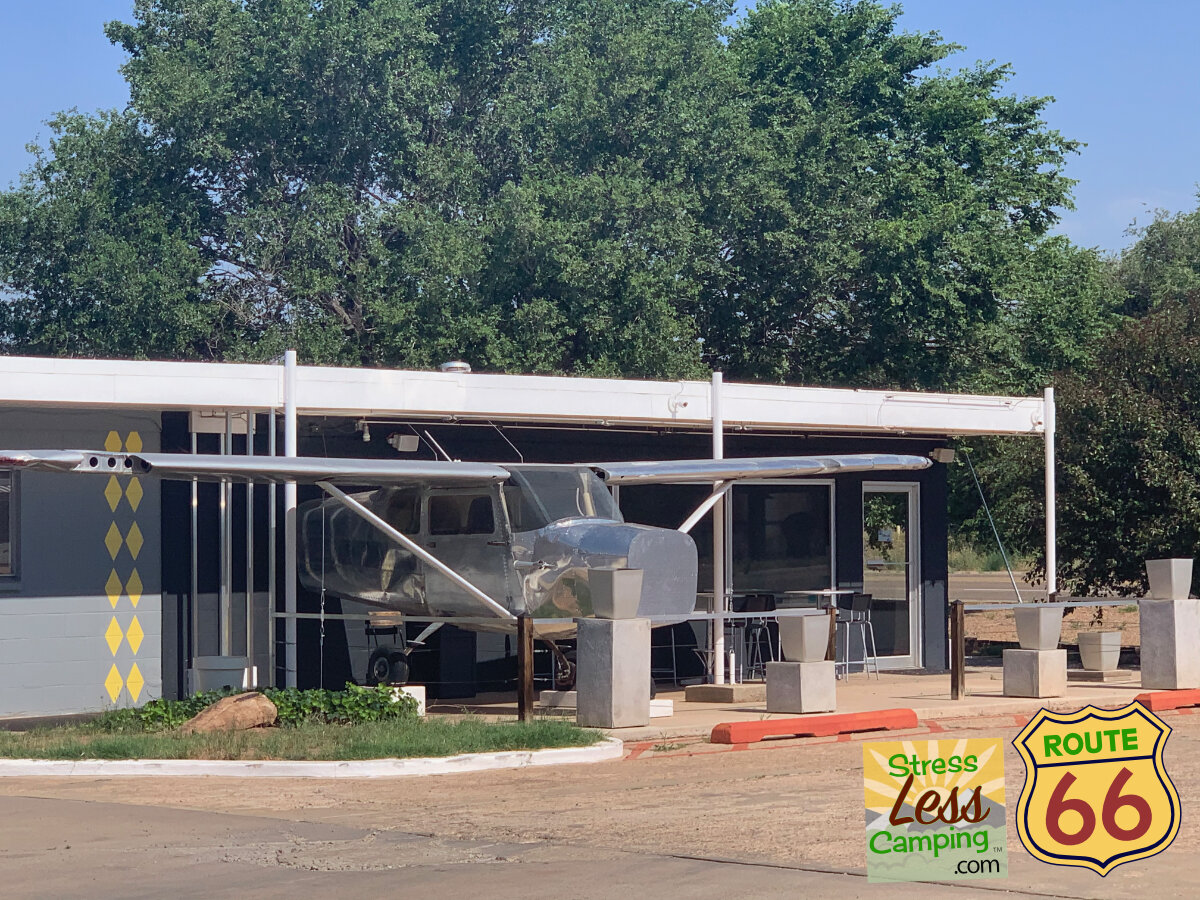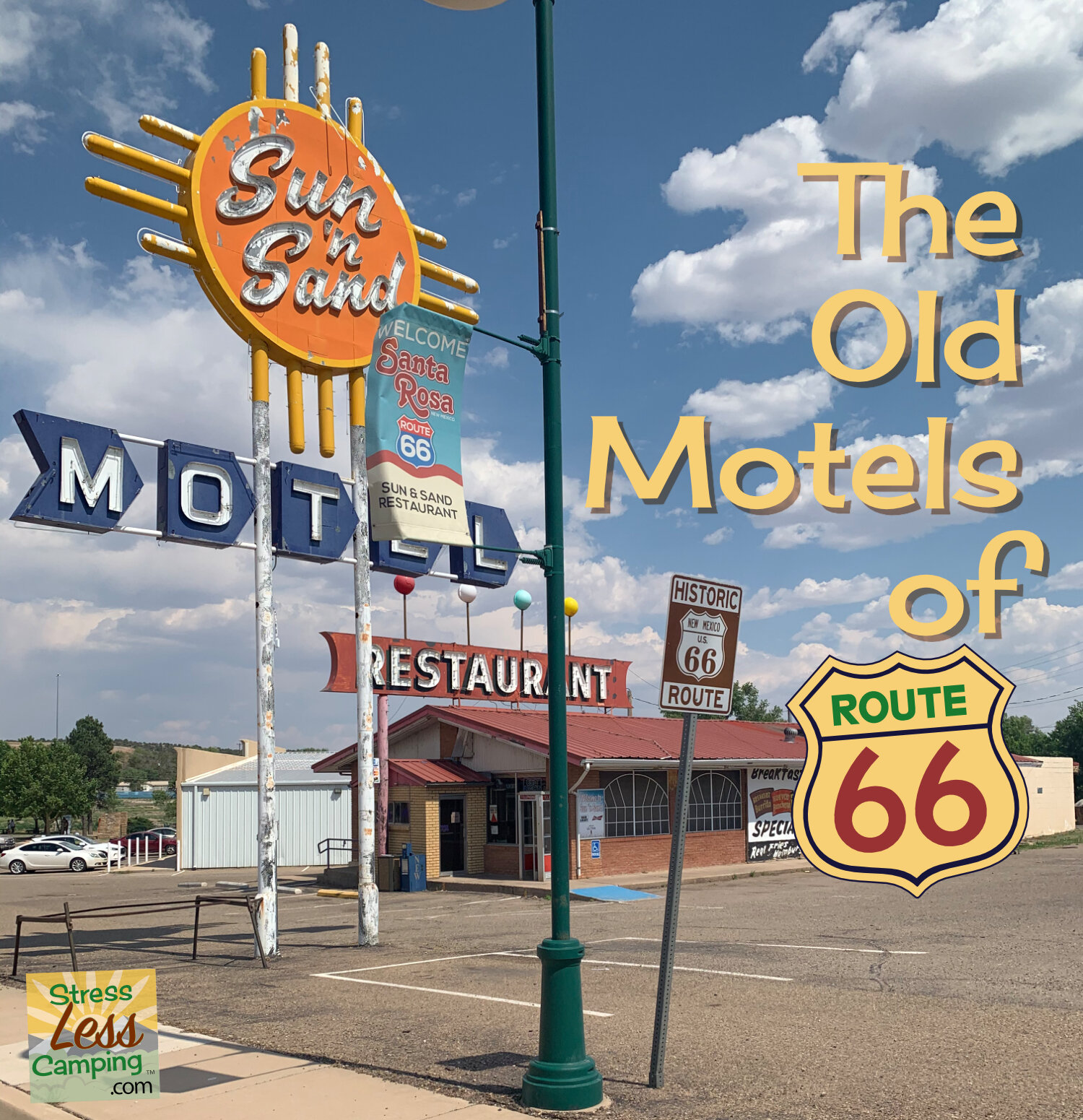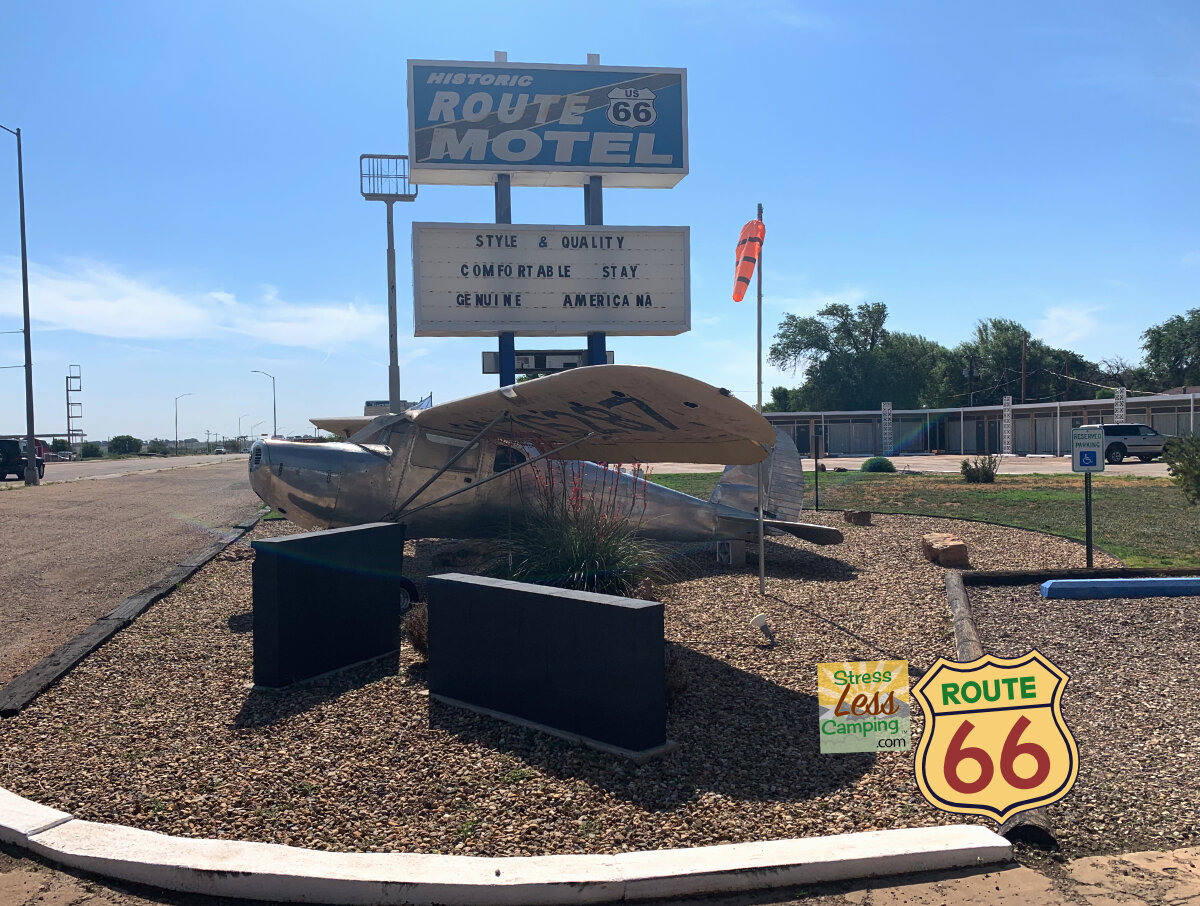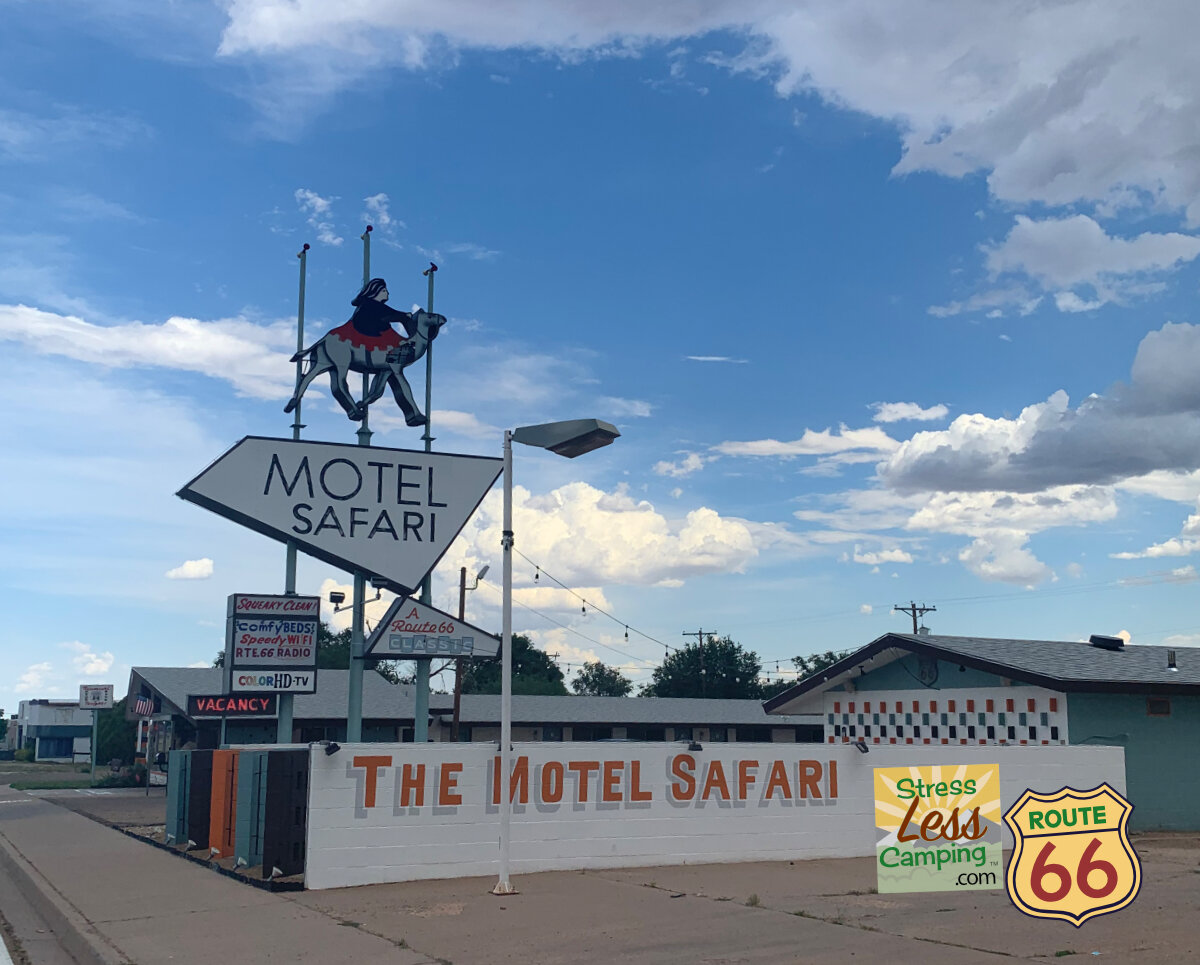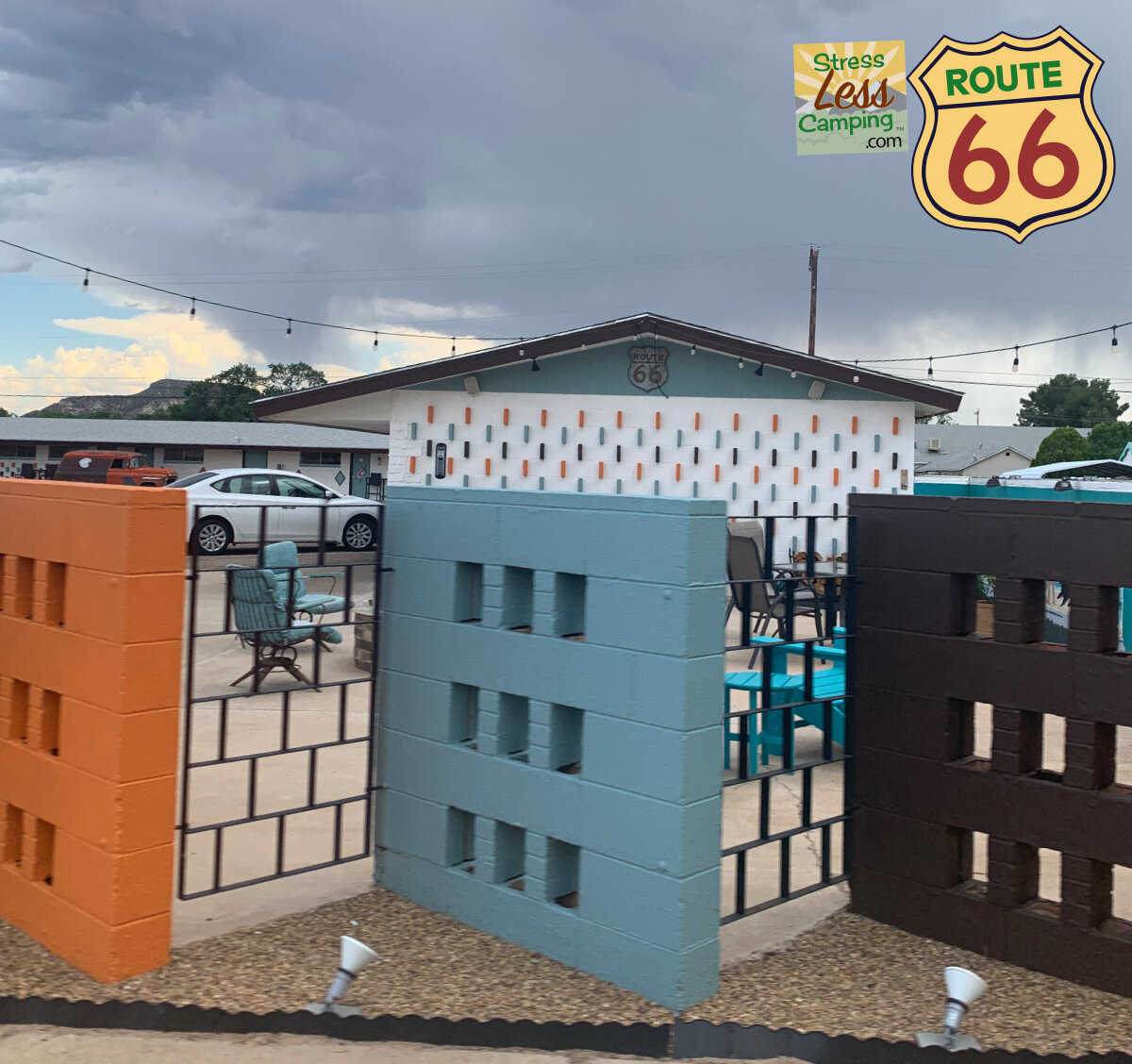What happened to the Motels of Route 66?
What happened to all the motels along Route 66? One of the most overwhelming things about this journey has been the sheer volume of motels along the route, so many of which are closed. Others have become places to live if life hasn’t been overly kind to you and a bunch are just road signs with the entire motel just gone.
Route 66 was a celebration of travel, and one of the first truly impacted by leisure travel. While there were traveling salespeople and people moving around the country it wasn’t until things really starting humming economically that we started traveling with our kids for the fun of just traveling.
As such Route 66 reflected this new economic prosperity for America and catered to it in every way possible.
In those days places where you buy gasoline weren’t just gas stations with chips and sodas. Instead, they were service stations. Cars were far less reliable than they are today and tires even less so so service stations would cater to this lack of reliability with tires, maintenance and a mechanic or several to fix all the things that went wrong with the family wagon.
Lots of dads wouldn’t even think about letting people eat in the family car so there weren’t so many places to pick up snacks made by big companies either. Maybe there were soda machines but grabbing a pack of Fritos and a Lunchable wasn’t even a consideration and even thinking about eating in the car could have gotten you thumbing your way back home.
That meant lots of eateries and diners along the Route as well with food prepared right there on the premises. Home made. You weren’t getting the stuff from the Sysco catalog - chances are the food on your plate came from close by and was totally prepped start to finish right there in the restaurant.
But most travelers probably had picnic lunches and ice chests full of drinks and so picnics were more popular than spending the money to eat out. But you needed somewhere to stay.
So motor hotels, or motels, sprang up all along the Mother Road. These single-story places were much the same from one town to the next, offering a bed and a toilet to weary travelers who were battling the heat and the inaccurate steering of those vintage lead sleds.
Your Honda today might be easy to drive and precise in the steering and brakes but keeping that Studebaker pointed straight meant constantly correcting for the jiggly steering and inaccuracy of bias ply tires. It was work. And dad was probably rowing gears and dodging others in a boat with no power anything and absolutely zero air conditioning.
So at any time when the day was done and dad was grumpy enough it was time to stop for an affordable room in a place where you could likely park that big boat right in front of the door. If you had a fancier place, you might get a car port right adjacent to the room.
Another step up was something themed like the Wig Wam Motel which was probably more appealing to the kids than the parents, but maybe not.
Motel owners appealed to drivers with ever fancier signs in front of their establishments. While today’s sign regulations discourage cool neon and fancy signs and the cost of building a big metal sign is pretty prohibitive, in the hey days of Route 66 it wasn’t much of a stretch to build a big metal sign in front of your motel with neon that dance and glowed in the fading light of day.
Swimmers dove into neon pools, camels trotted on neon legs and birds flew on lighted wings. All to get you to stop at a place that wasn’t that much nicer than any of the other places.
In fact many of these simple motels were a bit sketchy and, as the economics of keeping them open became ever more perilous, some operators cut maintenance first. Ugly walls, sagging beds and other clear signs of the fact that these places were getting out of favor meant they were even less in demand.
Plus let’s not ignore the fact that Route 66 itself was getting bypassed too. The motel that once enticed so many drivers to spending a night with their glowing neon now were showing that neon to fewer and fewer drivers as the Interstate beckoned motorists with high speeds and easy driving.
Even the neon itself was failing and the inconsistent experience was also making these places less enticing.
Then came the chains with their promise of clean, consistent experiences and fair pricing. And small, locally-owned motor hotels were doomed in so many cases.
Fortunately a few operators were smart and played up the kitsch of the past. By honing their marketing messaging and providing a unique experience a few of these vintage places remain open.
But far, far more are just shuttered memories of days gone by. So our trip down Route 66 as people who have owned a unique lodging property in the past that was bypassed by a highway realignment provides a unique look into challenges faced by the owners of so many closed motels.
Whose fault is it? Changing tastes, times, conditions, realities and more are all part of what happened to these. I’m just glad there are some still left and some of the ones that are are extremely cool.



